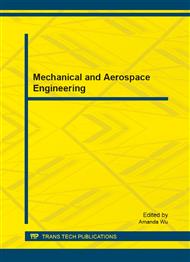p.527
p.532
p.537
p.543
p.548
p.553
p.561
p.568
p.573
Modeling of Layering Ceramic Shell Mould
Abstract:
This paper presents the modeling the drying process of shell mould layering process for the ceramic shell mould fabrication process. As this process involves the repeated drying of the different wetted/saturated layers, therefore modeling of this phenomena involve a sequent approach to tackle the whole development of shell mould layering process. In this work an Ab-Initia approach was selected as the best simulation technique to map the drying mechanism. Saturation or moisture content was selected as the best parameter that will represent the drying of layering process. Using FEM with quadrilateral shape mapping of several interested points were selected to predict the moisture/saturation movement during the drying of shell layering stages. Standard drying time with 2 hours and early drying time were chosen to measure the moisture movement as layer added to the previous dried coated shell or layers. This complex mechanism of drying and penetration layering shell were then numerically solve with fully implicit backward time stepping scheme. Hopefully, this model and can be used to measure the complex movement of the main parameter i.e saturation/temperature in the drying process of multilayer system which is sometimes impossible directly measured under experimental technique
Info:
Periodical:
Pages:
548-552
Citation:
Online since:
November 2012
Authors:
Keywords:
Price:
Сopyright:
© 2012 Trans Tech Publications Ltd. All Rights Reserved
Share:
Citation:


